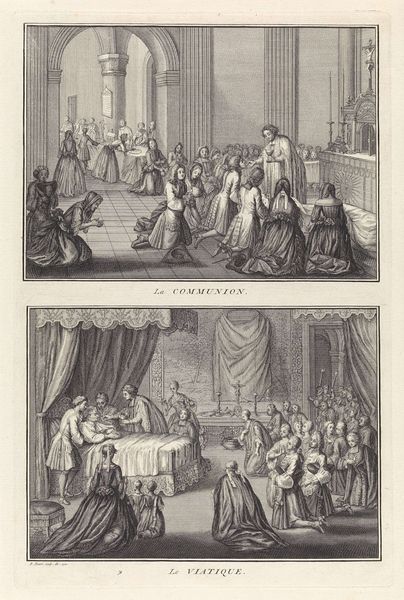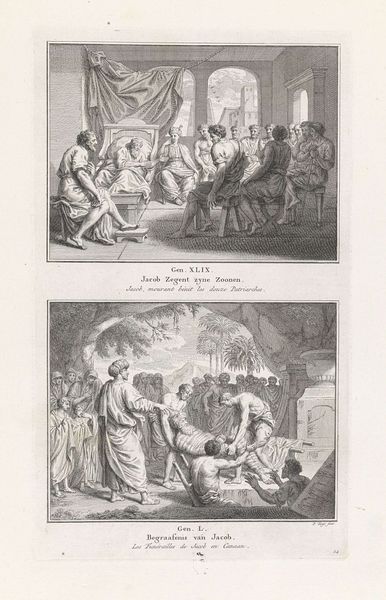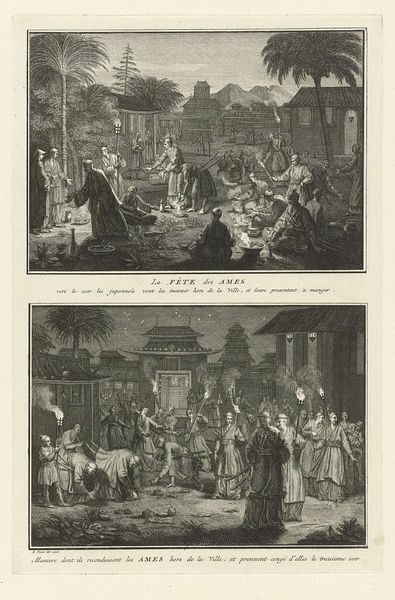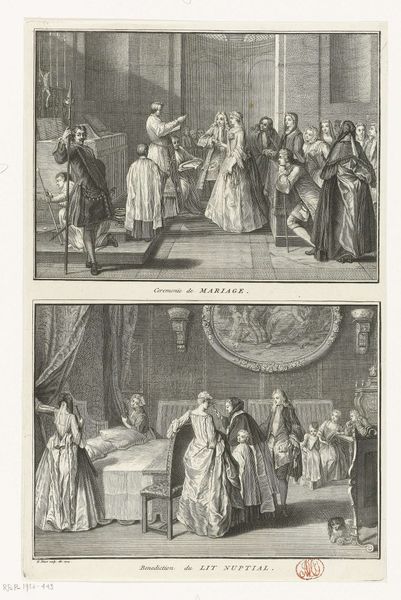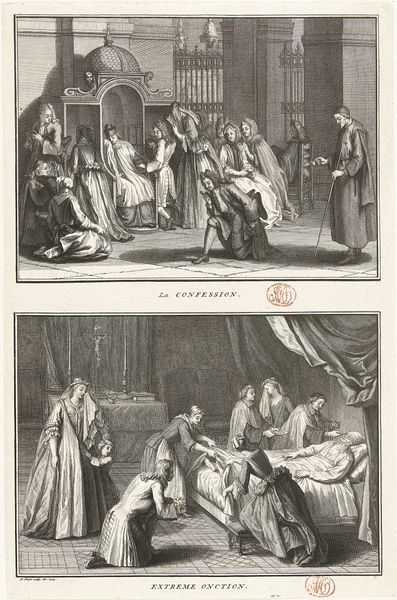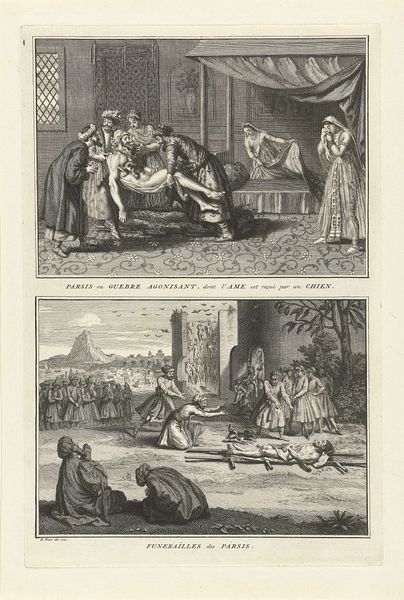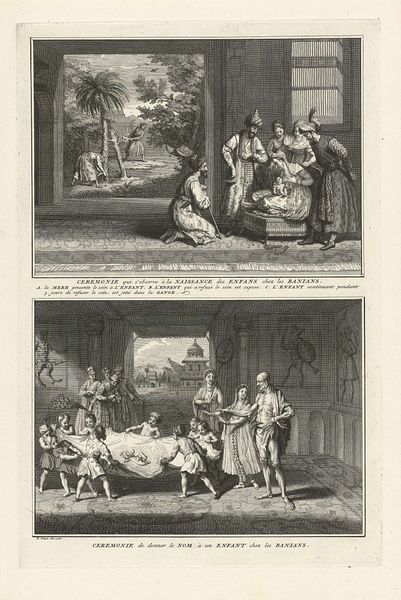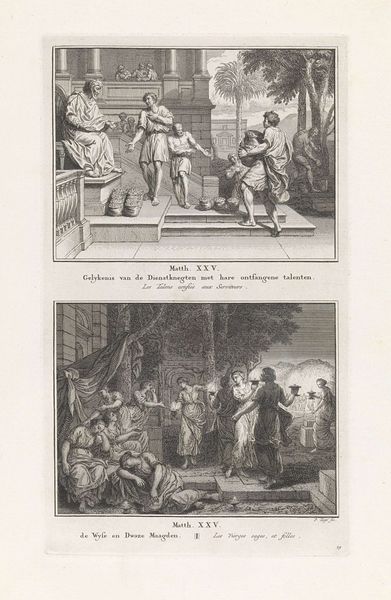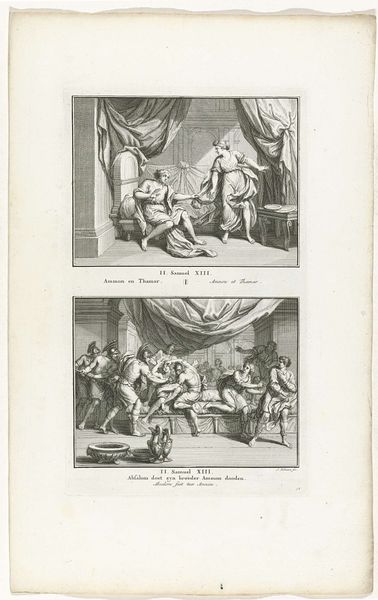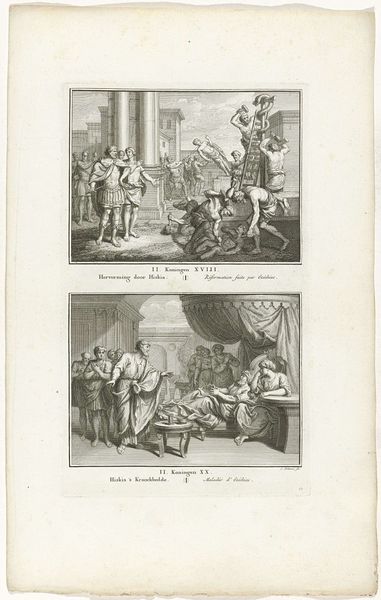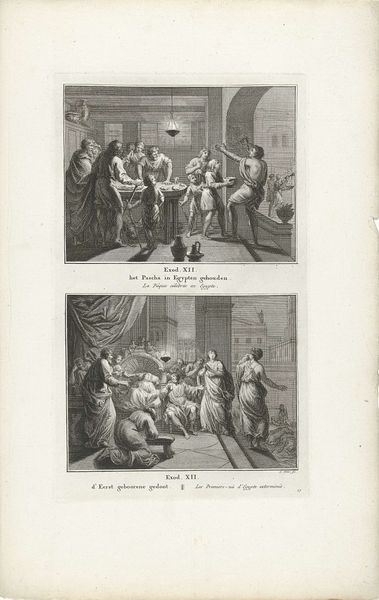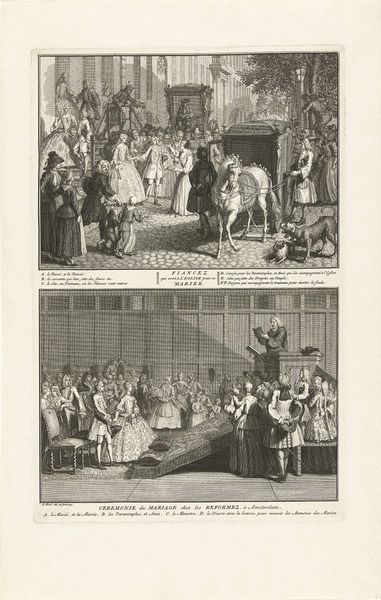
print, engraving
#
narrative-art
#
baroque
# print
#
old engraving style
#
traditional media
#
line
#
islamic-art
#
history-painting
#
engraving
Dimensions: height 340 mm, width 225 mm
Copyright: Rijks Museum: Open Domain
Curator: Welcome. Here we have a 1728 engraving by Bernard Picart entitled "Perzische huwelijksplechtigheid en doopceremonie," now residing at the Rijksmuseum. Editor: It strikes me as an intriguing diptych, full of stark contrasts and rigid geometries within its lines. A definite somber tonality, too. Curator: Absolutely. The piece is quite informative, presenting, in its upper register, a Persian wedding ceremony and below, what appears to be a Zoroastrian fire baptism. Given Picart’s Dutch context, it is fascinating how he sought to visually document rituals from afar. It highlights the 18th-century European fascination with "the Orient." Editor: Look at how Picart renders each scene; in the wedding ceremony, he crafts the space with angular precision, juxtaposing the seated couple with the standing figures, and notice how he uses stark tonal shifts to emphasize different planes. Similarly, below in the baptism ritual, the play between light and shadow feels decidedly baroque. Curator: Indeed. Considering the period, this work could also invite critical discussions about ethnographic representation. Picart's choices likely reflect the period’s ingrained Orientalist perspectives; even with good intentions, the viewpoint could essentialize complex rituals. We might unpack the colonial power structures implicit in depicting distant cultural ceremonies for a European audience. Editor: Yet I appreciate the almost scientific precision he employs. It invites a study of gesture and form. Consider the visual weight he distributes— how light reflects across various faces and drapes creating focal points that guide us, as viewers, through the dense figuration. It provides insight into compositional arrangements used to balance chaos with harmony. Curator: Precisely, examining how he uses light and shadow brings a richness and depth, regardless of historical lenses. Editor: A remarkable synthesis of artistry and social observation. It pushes the boundary of representation even now. Curator: It truly urges us to critically engage with cross-cultural depictions in art.
Comments
No comments
Be the first to comment and join the conversation on the ultimate creative platform.
